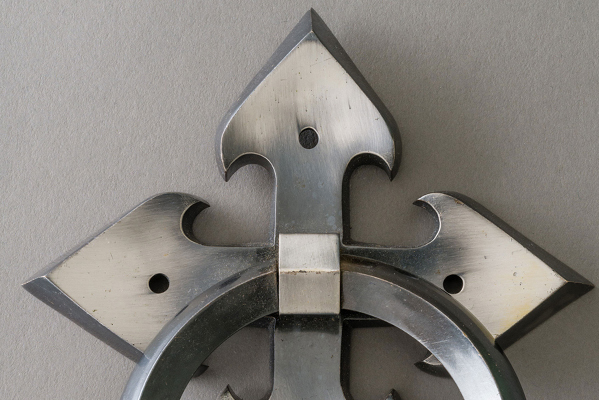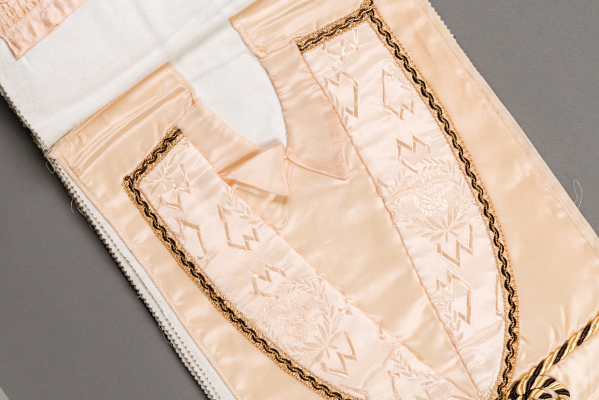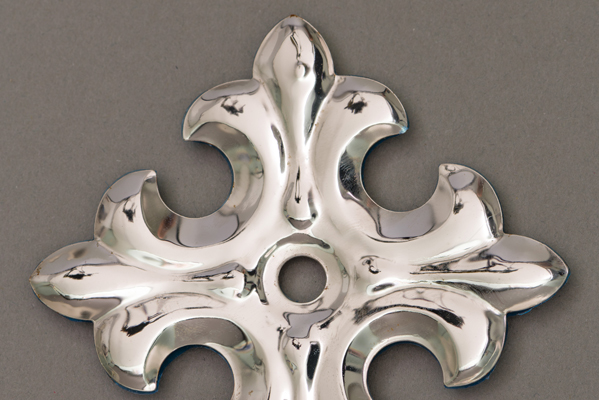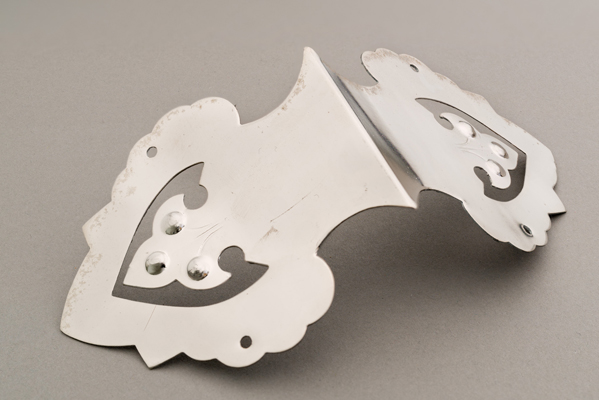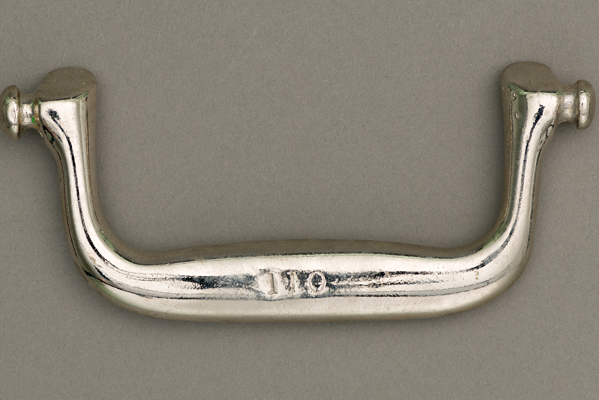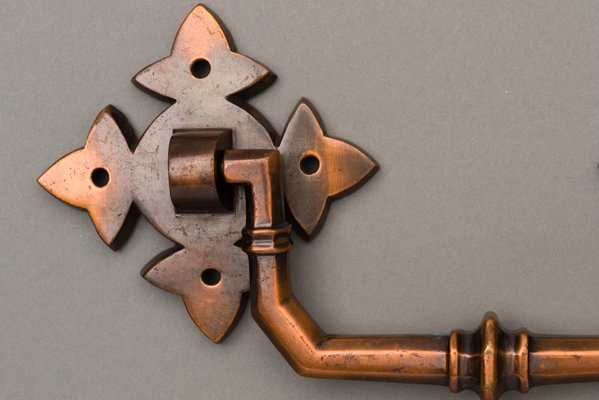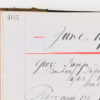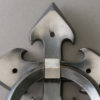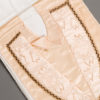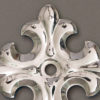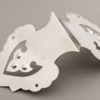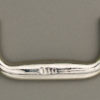Date: Circa 1894
Material: Organic/ paper
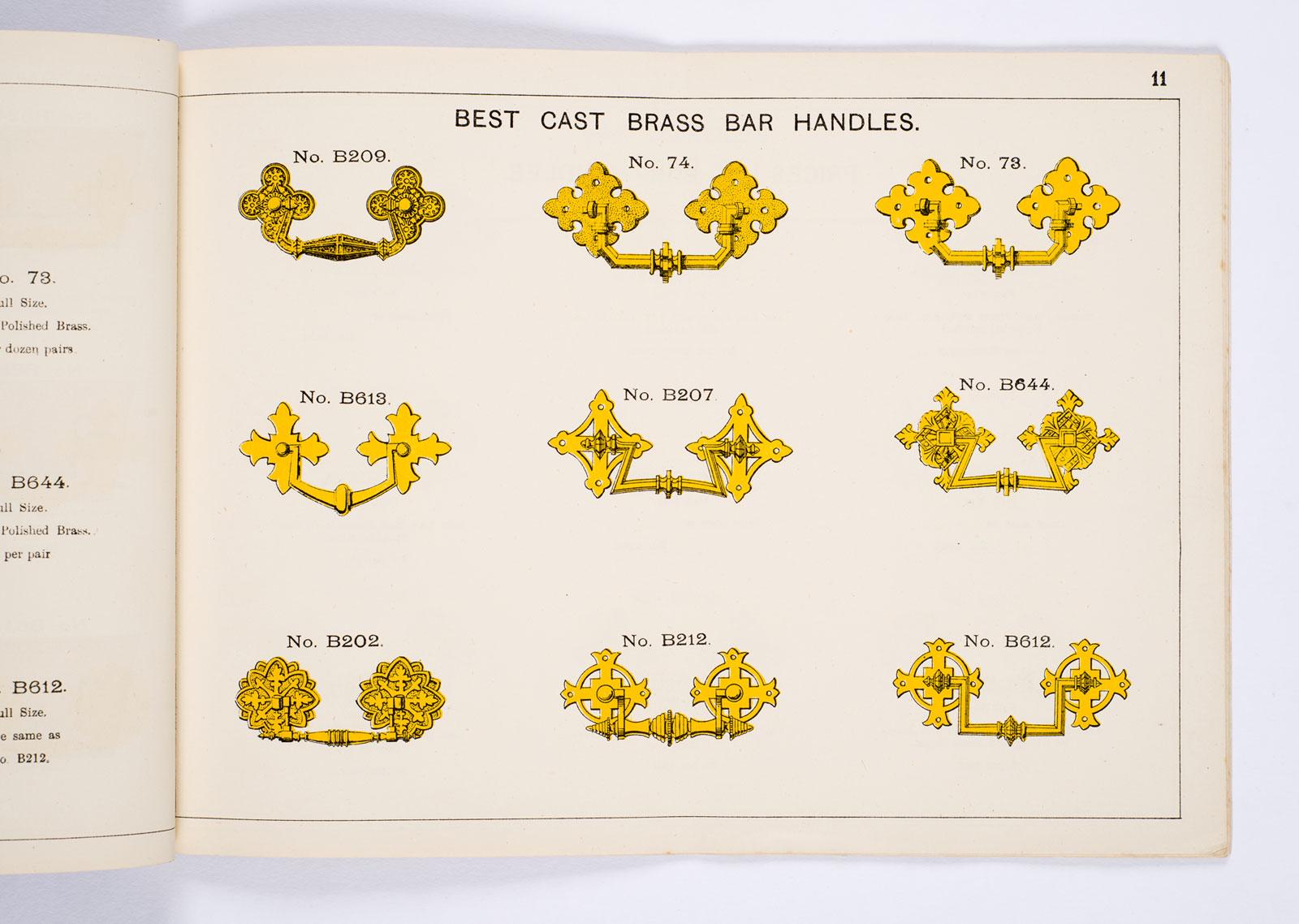
History:
This is the earliest trade catalogue we have in the Newman Brothers’ collection. It most likely dates from around 1894 or just after. It only contains brass products, which is consistent with the company’s manufacturing processes at this time. They were brass founders, and brass was the material they knew well. This page of ‘best cast brass bar handles’ was top of the range and was reserved for the middle and upper-class funerals.
Sarah Hoile, coffin furniture researcher, has said:
“The engraved breastplate was the most important item and usually the first to be added, if a coffin had any fittings at all. By the 1880s even otherwise plain pauper coffins were described as having plates. These usually included the name, age and date of death of the deceased and could be very large and highly decorated, in contrast with the small, plain name plates found on coffins today.”
Funerary expert, Julian Litten has said:
“Newman Brothers were up-market suppliers and certainly not the type of thing you’d see on the average coffin. They were producing the high-class burnished brass furnishings. They were reserved for the coffins of the royalty, nobility, gentry, and professional classes.”
Traditionally, a coffin would have been adorned with six to eight of these handles, often paired with back plates, which came at a greater cost. Brass furniture would have been placed on a coffin with a light veneer, often elm.
At this time, there were already of finishes widely available for coffin furniture including gilt copper, copper, bronze, brass, silver and ‘white’ (tin-dipped stamped iron). Black or japanned furniture was also available, which again was often tin-dipped stamped iron, painted with matt black paint. Raised details were then highlighted with water-gilding. Click here to see an example of a gilded, japanned breastplate manufactured at Newman Brothers.
Coffins in the early 19th century ranged from very cheap, flimsy and undecorated constructions used for pauper burials, to the hugely expensive, elaborate, and richly embellished coffins of the elite. By this time, technological developments meant that cheap metal fittings were available to a wider range of people than ever before, and by the mid-19th century, hundreds of tons of metal were buried each year in the form of coffin furniture.”


